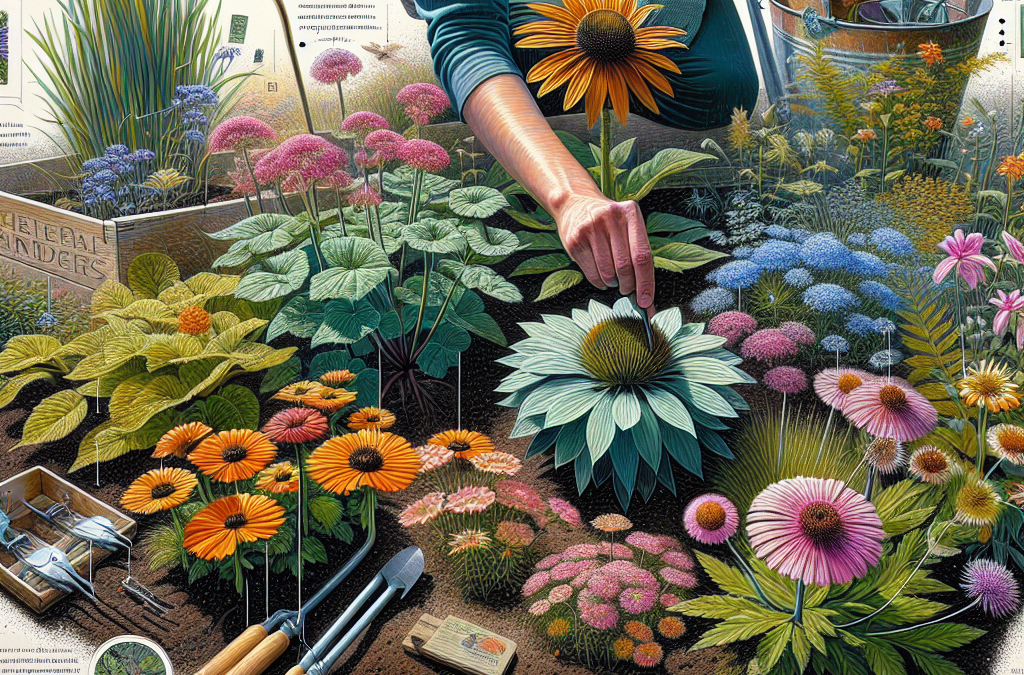Understanding Native Plants
What Are Native Plants?
From my experience, native plants are those that have evolved in a specific region over a long period, adapting to the local climate and soil conditions. They’re like the locals of the plant world—perfectly in tune with the environment. Whenever I’ve introduced native plants to my garden, it feels like I’m creating a small ecosystem that truly reflects my area.
Native plants not only thrive on their own but also provide essential habitats for local wildlife, including birds, bees, and butterflies. By planting natives, I’m not just beautifying my space; I’m partnering with nature. My garden becomes a haven for beneficial insects and pollinators, which are crucial for a healthy environment.
They’re usually low-maintenance, too. Native plants require less water, fertilizers, and pesticides compared to non-natives. This means I can spend more time enjoying my garden and less time stressing about its upkeep!
Choosing the Right Native Plants
Research Your Local Flora
Before diving headfirst into a plant spree, I always take some time to research which native plants thrive in my region. Local extension offices or botanical gardens are fantastic resources—they often have guides or even workshops that share insights on what grows best. I’ve learned that every area has its unique charm, and researching helps me tap into that.
Additionally, there’s something special about maintaining the natural heritage of my area. When I choose to plant species that naturally occur where I live, I connect my garden with the local landscape. It’s kind of like honoring the history of the land I’m on, which feels pretty cool.
There are also great online resources, such as regional gardening websites or native plant societies, to help determine which plants are appropriate for my specific locale. The more I learn, the better decisions I make for my garden!
Designing with Native Plants
Creating a Cohesive Garden Theme
Designing my garden with native plants can be a fantastic creative adventure! I love thinking about how various shapes, sizes, and colors will work together. I tend to go for a mix of structure and spontaneity with my plant choices, creating a balance that feels natural while still looking intentional.
I will often sketch out my ideas or even use a garden planning app to visualize how my plants will interact. This planning stage allows me to take into consideration light, soil conditions, and water requirements, making sure each plant thrives in its designated spot.
I also enjoy grouping plants with similar needs so that maintenance becomes a breeze! For instance, I’ll cluster drought-tolerant plants together, creating a mini desert oasis right in my backyard.
Maintaining Native Plant Gardens
Low-Maintenance Wonders
One of the most stunning advantages of native plants is their low-maintenance nature once established. After planting, I typically just keep an eye on them for the first growing season as they settle in. While I’m waiting for them to establish their roots, I ensure they get regular watering, but I’m careful not to overdo it!
As time goes on, I find that these plants require little intervention. Weeds still try to sneak in, of course, but the robust native plants usually outcompete them. It’s fascinating to sit back and watch nature do its thing, as the ecosystem begins to balance itself out.
Fertilizer? Not needed! I’ve learned that native plants do just fine with the nutrients available in our native soils. This further reduces my gardening chores, letting me enjoy the beauty of my garden instead of working in it.
Encouraging Wildlife
Creating a Habitat
One of the most rewarding aspects of using native plants has been attracting local wildlife to my garden. I’ve seen butterflies fluttering, bees buzzing, and even birds making nests in some of my plants. It’s turned my garden into a thriving ecosystem!
I’ve found that by including a variety of plant species, I can provide food and shelter for many creatures. For instance, I plant flowering natives to attract pollinators and include host plants for caterpillars and other larvae. It’s brilliant how interconnected gardening can be when we involve local species.
Additionally, I’ve left some areas a bit wild or untrimmed. This gives critters spaces to hide and thrive, and it adds a beautiful layer of natural charm. Every time I spot a new visitor in my yard, whether it’s a hummingbird or a ladybug, I feel that delightful satisfaction of having a hand in nurturing local wildlife!
Frequently Asked Questions
1. What exactly is a native plant?
A native plant is one that has developed over time in a specific region and is adapted to the local conditions. They typically require less maintenance and provide essential habitats for local wildlife.
2. Why should I choose native plants for my garden?
Native plants are hardy, low-maintenance, and they support local wildlife. They’re well-suited to their environment, making them easier to grow compared to non-native species.
3. How do I know which native plants to choose?
Researching local flora is key! Reach out to your local extension office, botanical gardens, or native plant societies for information about plant choices that thrive in your area.
4. Will native plants attract wildlife to my garden?
Absolutely! Native plants provide food and habitat for bees, butterflies, birds, and other wildlife, making your garden more vibrant and ecologically beneficial.
5. Do native plants require much upkeep?
Once established, native plants generally require less maintenance than non-native plants. They’re adapted to local conditions, so they will need less watering and fertilizer!





